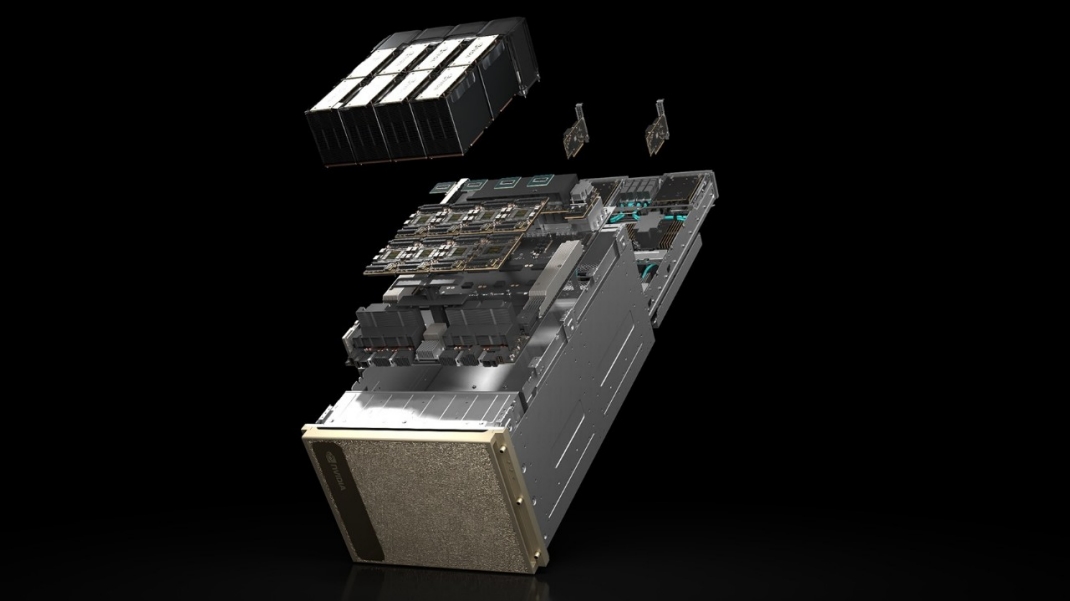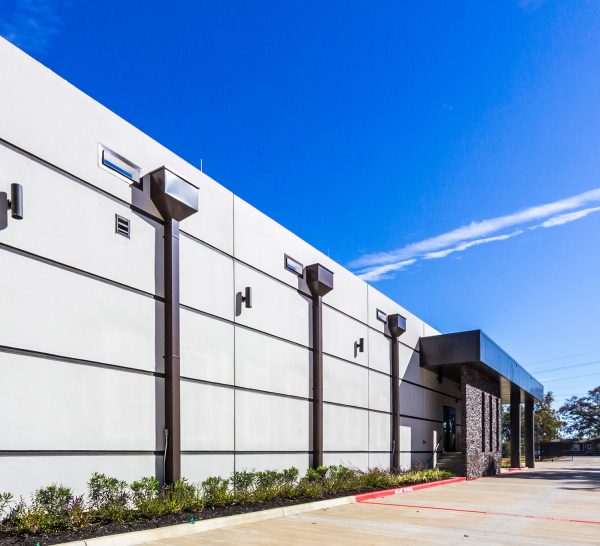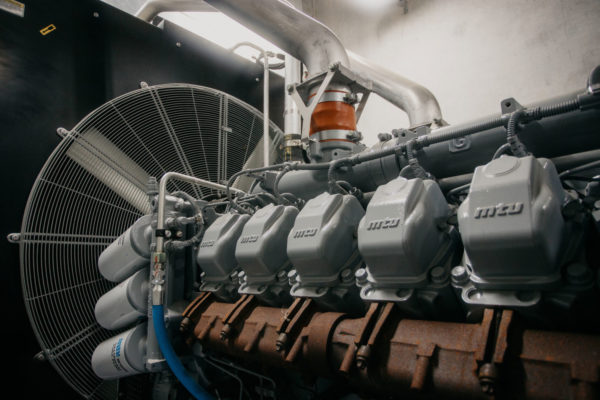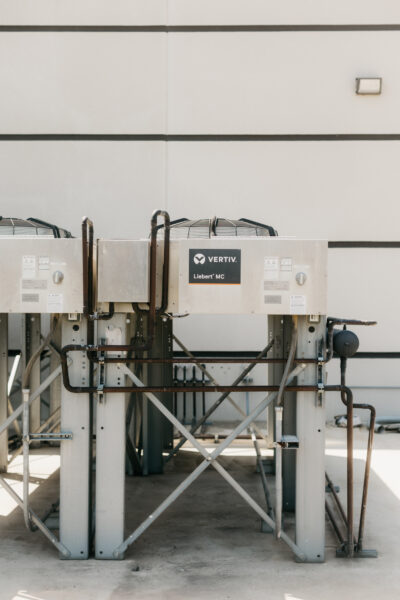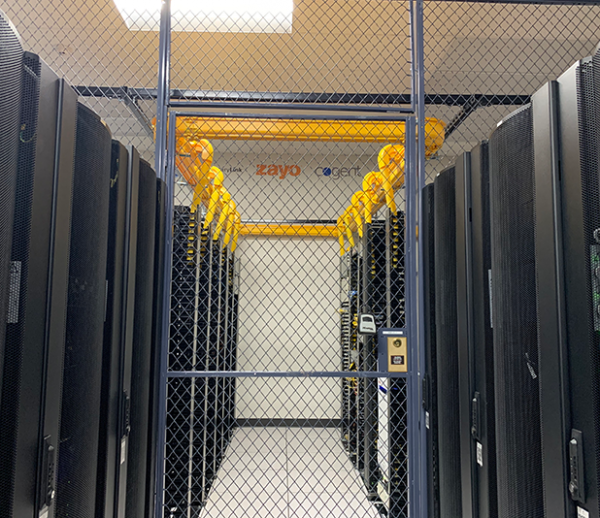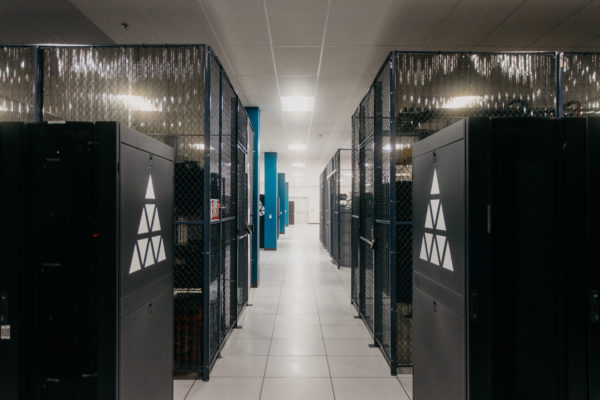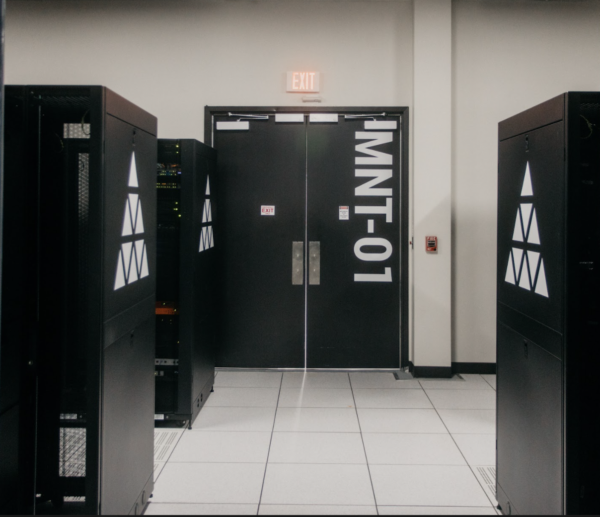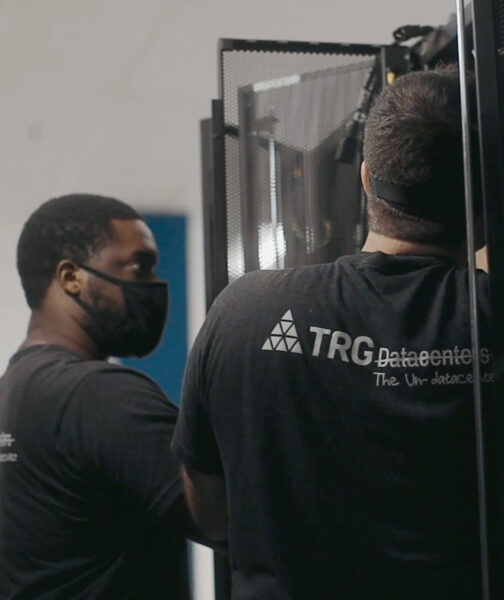Initially, GPUs were created to process data from a central processor and render images for display. But modern GPUs? They do far more than just image rendering. Today’s GPUs handle complex 2D and 3D graphics in real-time and deliver far smoother frame rates and higher resolution.
As technology advanced, GPUs became essential for tasks like 3D modeling, CAD drawings, video editing, and special effects in movies. With the rise of AI, GPUs evolved to power machine learning. Imagine building a model that can diagnose a complex medical condition in minutes.
For instance, a data scientist might spend weeks compiling data to create a deep-learning model that identifies cancer signs. While promising, these models can often fail—crashing or lagging—because traditional CPUs can’t handle the enormous data loads and complexity.
This is one of the biggest challenges in deep learning: the training phase. A model must learn from millions of images while maintaining performance. This is where GPU colocation becomes invaluable. By using colocation services, businesses, and researchers access powerful GPUs in top-tier data centers without the cost of building their own infrastructure. This setup simplifies handling massive datasets and accelerates breakthroughs in science and technology.
As data volumes grow and machine learning becomes more complex, the demand for faster, more powerful GPUs increases daily. This blog will take a deep dive into the world of GPUs being used for deep learning, the factors to consider when buying one, and a detailed analysis of what GPU performs the best under extreme amounts of datasets. It will also equip you with the information you need to choose the right GPU for your machine-learning system.
Why Are GPUs Important for Machine Learning?
Deep learning involves large datasets and complex calculations. While a CPU can run the software needed for these tasks, it’s not designed to handle concurrent and highly complex computations efficiently. This is where a powerful GPU comes in to support the CPU by managing these demanding processes.
GPUs are super important for deep learning because they handle big datasets and do lots of tasks at once. The role and purpose of data center GPUs is to take on heavy-duty jobs, like training AI models and processing massive amounts of data, making them perfect for advanced machine learning.
Think of a GPU as the heart of your deep-learning project. It’s a specialized piece of hardware that works alongside your CPU, handling the heavy calculations. By doing so, it drastically reduces the time required to train your deep-learning model.
This capability allows businesses to:
- Target new opportunities: With a faster deep learning model, businesses can analyze data and deploy solutions much quicker. This speed allows them to explore emerging trends and capitalize on new opportunities, whether it’s launching innovative products, improving customer experiences, or optimizing internal operations. For example, companies using advanced GPUs can train AI models in hours instead of weeks so they can act on real-time insights and stay ahead of the competition.
- Improved efficiency: A CPU handles all complex tasks, but it needs a GPU to function efficiently. For instance, Airbnb may use CPUs to handle user interactions but relies on GPUs for image recognition systems. This separation of tasks enhances efficiency across the platform.
- Improved accuracy: A powerful GPU means a business can improve its deep learning system alongside AI, and provide it with more datasets that will lead to accurate calculations and an efficient system. For example, Paypal has 426 million users but how is it perfectly secure from fraudulent activities? Paypal uses a GPU for its deep learning system, this GPU functions to analyze large amounts of data being fed into it to secure its platform from fraudulent activities in real-time.
- Increased security: Given that a GPU is 100 times faster than a CPU, this allows businesses to push the boundaries of their deep learning systems, leading to new products, faster services, and a secure platform for millions of users. When you talk about a secure learning system, Tesla is the one to look at. Tesla uses GPUs to continuously improve real-world driving experiences, given that most of its cars are electric and feature AI-powered systems, including lane assist, cruise control, and self-driving capabilities.
- Scalability and cost-effectiveness: GPUs allow businesses to scale their deep learning systems as data grows, without massive increases in infrastructure costs. Cloud-based solutions and GPU colocation services enable companies to access high-powered GPUs without purchasing expensive hardware.
CPU vs GPU for Machine Learning
To understand why GPU excels in machine learning over CPU, we need to look at the basics of how they function:
- CPUs: These are designed for sequential tasks, focusing on accuracy. Think of them as the brain, solving one problem at a time. However, they fall short when it comes to handling multiple tasks in parallel.
- GPUs: These excel in parallel processing. They can handle massive datasets, complex calculations, and algorithm training which makes them ideal for machine learning.
So the conclusion is that a CPU is a central body that revolves around solving one task at a time, to handle that task a team is required, and that team is provided by a GPU, which can quickly take care of all the datasets, complex calculations and make efficient algorithms for AI machine learning side by side.
GPU for AI – Deep Learning and Machine Learning
CPU is efficient and powerful when it comes to solving sequential tasks, but they lag behind GPUs when it comes to performing parallel tasks with more efficiency.
For a detailed review of GPU VS CPU, have a look at our guide, where we have carefully examined both CPU and GPUs ideal for an AI framework and why a CPU lags behind a GPU.
Here are some pros and cons for GPUs used for AI:
Pros
Parallel processing:
GPUs can execute thousands of tasks simultaneously, like image rendering, AI machine learning, or model training, making a GPU 10 times faster and more effective. Parallel processing is the reason why businesses turn to AI colocation, which is not only efficient but makes machine learning fast and reliable.
If you want to keep your AI machine running at full speed, partner up with TRG where we provide the perfect solution to make your AI Machine learning successful.
Specialized Cores:
Unlike a CPU, A GPU consists of cores designed to perform
- CUDA Core: A CUDA Core is designed to perform parallel tasks alongside a CPU, look at it this way, the more CUDA cores your GPU has, The faster it performs.
- Tensor Core: Every Machine learning or deep learning project has complex calculations, a Tensor core is specifically designed to target these calculations, and act as an integral part of your machine learning system.
Bandwidth:
A CPU performing a single task at a time has low memory bandwidth, while a GPU has a High Memory Bandwidth. Memory Bandwidth is the rate at which data can be transferred from a GPU, think of it like a highway, the bigger it is the faster data travels.
Adaptation to AI:
Look, AI and Machine learning, both need large amounts of datasets to work with and a GPU having high bandwidth memory, specialized CUDA, and Tensor cores tends to adopt faster, leading to short-time training phase and quick results.
Cons
Costly:
GPUs that can handle machine learning are typically high-end GPUs, so they’re really expensive compared to CPUs
Energy Consumption: A GPU consumes far more energy than a CPU, the reason being; that a GPU is specialized to perform sequential operations, having specific cores for each operation; to handle this load, a GPU consumes a lot of energy that produces heat, and a cooling system is needed
Interconnection: Interconnecting GPUs can be a complex method, it requires specific knowledge to connect these GPUs in parallel
The Best GPU for AI in 2024
Now that you know why GPUs are a game-changer for AI and machine learning, let’s talk about some of the best GPUs out there. But first, let’s check out the key players:
NVIDIA has been dominating AI with its CUDA, Tensor Cores, and NVLink, which makes connecting GPUs super efficient. These features make NVIDIA a top choice, especially when you’re looking for a GPU for inference or training big models.
On the other hand, AMD is stepping up fast with its MI series GPUs. They’re affordable and pack plenty of power, offering a solid option for businesses that need strong performance without breaking the bank.
Both NVIDIA and AMD bring unique solutions for machine learning, and choosing between them depends on your specific needs—whether it’s raw performance, cost-effectiveness, or compatibility with your setup.
NVIDIA A100 Tensor Core GPU:
One of NVIDIAs Giants, and the fastest high-performing GPU perfect for AI data centers. This GPU is perfect for data analytics and high-performance computing, powered by NVIDIAs Ampere Architecture, it performs 10x better than its previous generations.
Currently has 2 variants, A100 PCIe and A100 SXM4.
A100 PCIe:
A PCIe-based GPU, meaning it’s designed for most PCIe slots found in most servers. It features 80 GB GDDR6 memory which is optimal for AI, High Performance Calculations ( HPC), and machine learning.
A100 SXM4:
A high-performing GPU compared to A100 PCIe, It features SXM4 which is ideal for high-end servers having SXM4 slots, and has 80 GB of HBM2 memory which provides an increase in memory bandwidth as compared to PCIe-based GPU.
Specs:
|
A100 80 GB PCle |
A100 80 GB SXM4 | |
|
FP64: |
9.7 TFLOPS | |
|
FP64 Tensor Core: |
19.5 TFLOPS | |
|
FP32: |
19.5 TFLOPS | |
|
Tensor Float 32 ( TF32): |
156 TFLOPS | 312 TFLOPS* | |
|
BFLOATI6 Tensor Core: |
312 TFLOPS | 624 TFLOPS* | |
|
FP16 Tensor Core: |
312 TFLOPS | 624 TFLOPS* | |
|
INT8 Tensor Core: |
624 TOPS | 1248 TOPS* | |
|
GPU Memory: |
80 GB GDDR6 |
80 GB HBM2e |
|
GPU Memory Bandwidth: |
1,935 GB/s |
2,039 GB/s |
Max Thermal Design Power: |
300W |
400W *** |
|
Multi-Instance GPU: |
Up to 7 MIGs @ 10GB |
Up to 7 MIGs @ 10GB |
|
Form Factor: |
PCIe Dual-slot air-cooled or single-slot liquid-cooled |
SXM |
|
Interconnect: |
NVIDIA® NVLink® Bridge for 2 GPUs: 600 GB/s ** PCIe Gen4: 64 GB/s |
NVLink: 600 GB/s PCIe Gen4: 64 GB/s |
|
Server Options : |
Partner and NVIDIA-Certified Systems™ with 1-8 GPUs |
NVIDIA HGX™ A100-Partner and NVIDIA-Certified Systems with 4,8, or 16 GPUs NVIDIA DGX™ A100 with 8 GPUs |
NVIDIA H100 Tensor Core GPU:
The NVIDIA H100, widely regarded as the best conversational AI GPU, is built on NVIDIA’s Hopper Architecture. It delivers unparalleled performance, accelerating large language AI models by up to 30x with its specialized transformer designed for trillions of AI parameters.
Currently, the H100 comes in two variants, H100 SXM and H100 NVL:
H100 SXM:
The H100 SXM is designed for high-end servers equipped with SXM slots. It offers 80 GB of HBM3 memory, providing ultra-high memory bandwidth, which makes it ideal for complex AI training tasks and large-scale HPC workloads.
H100 NVL:
The H100 NVL variant is optimized for deployment in PCIe-based systems, offering 94 GB of HBM3 memory. It is specifically tailored for large language model inference and other AI applications requiring exceptional throughput and efficiency.
Specs:
|
H100 SXM |
H100 NVL | |
|
FP64: |
34 teraFLOPS |
30 teraFLOPS |
|
FP64 Tensor Core: |
67 teraFLOPS |
60 teraFLOPS |
|
FP32: |
67 teraFLOPS |
60 teraFLOPS |
|
Tensor Float 32 ( TF32): |
989 teraFLOPS |
835 teraFLOPS |
|
BFLOATI6 Tensor Core: |
1979 teraFLOPS |
1671 teraFLOPS |
|
FP16 Tensor Core: |
1979 teraFLOPS |
1671 teraFLOPS |
|
FP8 Tensor Core |
3958 teraFLOPS |
3341 teraFLOPS |
|
INT 8 Tensor Core |
3958 TOPS |
3341 TOPS |
|
GPU memory |
80 GB |
94 GB |
|
GPU memory Bandwidth |
3.35TB/s |
3.9TB/s |
|
Decoders |
7 NVDEC |
7 NVDEC |
|
Max Thermal Design Power (TDP) |
Upto 700W ( configurable) |
350-400W (configurable) |
|
Multi-Instance GPUs |
Upto 7 MIGS @ 10GB each |
Up to 7 MIGS @ 12GB each |
|
Form Factor |
SXM |
PCIe dual-slot air-cooled |
|
Interconnect |
NVIDIA NVLINK. 900GB/s PCle Gen 5: 128 GB/s |
NVIDIA NVLink: 600GB/s PCIe Gen5: 128GB/s |
|
Server Options |
NVIDIA HGX H100 Partner and NVIDIA- Certified Systems™ with 4 or 8 GPUs NVIDIA DGX H100 with 8 GPUs |
Partner and NVIDIA-Certified Systems with 1–8 GPUs |
|
NVIDIA AI Enterprise |
Add-on |
Included |
NVIDIA A40 GPU:
The A40 GPU is another powerful Data Center GPU that excels in Visual Computing. It can combine a large number of datasets into graphics with AI acceleration, having features like ray-traced rendering, simulation, and fast Virtual production.
Specs:
|
GPU Memory |
48 GB GDDR6 with error-correcting code (ECC) |
|
GPU Memory Bandwidth |
696 GB/s |
|
Interconnect |
NVIDIA NVLink 112.5 GB/s (bidirectional) PCIe Gen4: 64GB/s |
|
NVLink |
2-way low profile (2-slot) |
|
Display Ports |
3x DisplayPort 1.4* |
|
Max Power Consumption |
300 W |
|
Form Factor |
4.4″ (H) x 10.5″ (L) Dual Slot |
|
Thermal |
Passive |
|
vGPU Software Support |
NVIDIA Virtual PC, NVIDIA Virtual Applications, NVIDIA RTX Virtual Workstation, NVIDIA Virtual Compute Server, NVIDIA AI Enterprise |
|
vGPU Profiles Supported | |
|
NVENC | NVDEC |
1x | 2x (includes AV1 decode) |
|
Secure and Measured Boot with Hardware Root of Trust |
Yes (optional) |
|
NEBS Ready |
Level 3 |
|
Power Connector |
8-pin CPU |
NVIDIA RTX 5880 Ada Generation GPU :
Built with NVIDIAs Ada Lovelace architecture, RTX 5880 is the combination of 3rd generation RT Core, 4th gen Tensor Core, and Next-Gen CUDA cores with 48GB of graphics, this GPU is considered a mammoth in the world of GPUs in terms of graphic rendering, and fast computing performance.
Specs:
|
GPU Memory |
48GP GDDR6 with error-correcting code ( ECC) |
|
Display Ports |
4x Displayport 1.4 |
|
Max Power Consumption |
285W |
|
Graphics Bus |
PCle Gen4 x 16 |
|
Form Factor |
4.4” (H) x 10.5” (L) dual-slot |
|
Thermal |
Active |
|
vGPU Software Support |
NVIDIA vPC/vApps, NVIDIA RTX Virtual Workstation |
|
vGPU Profiles Supported |
See the Virtual GPU Licensing Guide |
|
VR Ready |
Yes |
AMD Instinct M1250X:
This is a GPU built as a catalyst for High Performing Computing, making it a good choice for AI machine learning.
Specs:
|
GPU Architecture |
CDNA2 |
|
Lithography |
TSMC 6nm FinFET |
|
Stream Processors |
14080 |
|
Compute Units |
220 |
|
Peak Engine Clock |
1700 MHz |
|
Peak Half Precision (FP16) Performance |
383 TFLOPs |
|
Peak Single Precision Matrix (FP32) Performance |
95.7 TFLOPs |
|
Peak Double Precision Matrix (FP64) Performance |
95.7 TFLOPs |
|
Peak Single Precision (FP32) Performance |
47.9 TFLOPs |
|
Peak Double Precision (FP64) Performance |
47.9 TFLOPs |
|
Peak INT4 Performance |
383 TOPs |
|
Peak INT8 Performance |
383 TFLOPs |
|
Peak bfloat16 |
383 TFLOPs |
AMD Instinct MI300A and MI300X:
AMD INSTINCT MI300A: MI300A, AMD GPUs built to deliver flagship performance for high-performance computing (HPC) and Generative AI
Specs:
|
GPU Architecture |
AMD CDNA™ 3 |
|---|---|
|
Lithography |
TSMC 5nm \ |
|
Stream Processors |
14,592 |
|
Matrix Cores |
912 |
|
Compute Units |
228 |
|
Peak Engine Clock |
2100 MHz |
|
Peak Eight-bit Precision (FP8) Performance (E5M2, E4M3) |
1.96 PFLOPs |
|
Peak Eight-bit Precision (FP8) Performance with Structured Sparsity (E5M2, E4M3) |
3.92 PFLOPs |
|
Peak Half Precision (FP16) Performance |
980.6 TFLOPs |
|
Peak Half Precision (FP16) Performance with Structured Sparsity |
1.96 PFLOPs |
|
Peak Single Precision (TF32 Matrix) Performance |
490.3 TFLOPs |
|
Peak Single Precision (TF32) Performance with Structured Sparsity |
980.6 TFLOPs |
|
Peak Single Precision Matrix (FP32) Performance |
122.6 TFLOPs |
|
Peak Double Precision Matrix (FP64) Performance |
122.6 TFLOPs |
|
Peak Single Precision (FP32) Performance |
122.6 TFLOPs |
|
Peak Double Precision (FP64) Performance |
61.3 TFLOPs |
|
Peak INT8 Performance |
1.96 POPs |
|
Peak INT8 Performance with Structured Sparsity |
3.92 POPs |
|
Peak bfloat16 |
980.6 TFLOPs |
|
Peak bfloat16 with Structured Sparsity |
1.96 PFLOPs |
|
Transistor Count |
146 Billion |
AMD INSTINCT MI300X:
INSTINCT MI300X combines the power of AMD Instinct and AMD EPYC processors with shared memory, making it a powerful GPU for HPC and AI Machine learning.
Specs:
|
GPU Architecture |
AMD CDNA™ 3 |
|
Lithography |
TSMC 5nm \ |
|
Stream Processors |
19,456 |
|
Matrix Cores |
1216 |
|
Compute Units |
304 |
|
Peak Engine Clock |
2100 MHz |
|
Peak Eight-bit Precision (FP8) Performance (E5M2, E4M3) |
2.61 PFLOPs |
|
Peak Eight-bit Precision (FP8) Performance with Structured Sparsity (E5M2, E4M3) |
5.22 PFLOPs |
|
Peak Half Precision (FP16) Performance |
1.3 PFLOPs |
|
Peak Half Precision (FP16) Performance with Structured Sparsity |
2.61 PFLOPs |
|
Peak Single Precision (TF32 Matrix) Performance |
653.7 TFLOPs |
|
Peak Single Precision (TF32) Performance with Structured Sparsity |
1.3 PFLOPs |
|
Peak Single Precision Matrix (FP32) Performance |
163.4 TFLOPs |
|
Peak Double Precision Matrix (FP64) Performance |
163.4 TFLOPs |
|
Peak Single Precision (FP32) Performance |
163.4 TFLOPs |
|
Peak Double Precision (FP64) Performance |
81.7 TFLOPs |
|
Peak INT8 Performance |
2.6 POPs |
|
Peak INT8 Performance with Structured Sparsity |
5.22 POPs |
|
Peak bfloat16 |
1.3 PFLOPs |
|
Peak bfloat16 with Structured Sparsity |
2.61 PFLOPs |
|
Transistor Count |
153 Billion |
Now, let’s have a look at how these flagship GPUs fare against each other.
|
GPU |
CUDA Cores |
Memory Capacity |
Memory Type |
Tensor Cores |
TDP (W) |
Key Features |
|
NVIDIA A100 |
6912 |
40/80 GB |
HBM2e |
Yes |
400 |
Exceptional performance for large-scale AI |
|
NVIDIA H100 |
16896 |
80 GB |
HBM3 |
Yes |
700 |
Hopper architecture, highest performance |
|
NVIDIA A40 |
10752 |
48 GB |
GDDR6 |
Yes |
300 |
Versatile, balance of performance and cost |
|
NVIDIA L40S |
18432 |
48 GB |
GDDR6 |
No |
300 |
Visual computing, generative AI |
|
NVIDIA RTX 6000 Ada |
18176 |
48 GB |
GDDR6 |
Yes |
300 |
Large memory, professional workloads |
|
AMD Instinct MI250X |
110 |
128 GB |
HBM2e |
No |
560 |
High-performance computing, AI |
|
AMD Instinct MI300A |
128 GB |
HBM3 |
Integrated CPU+GPU, unified memory | |||
|
AMD Instinct MI300X |
192 GB |
HBM3 |
Integrated CPU+GPU, highest memory capacity |
Note: Please verify with the manufacturer for the most up-to-date information.
Why Data Centers Are Important for Deep Learning
A Datacenter is essential for your deep learning system in many ways:
- Computational needs: A deep learning system needs a lot of power to train, and data centers house thousands of GPUs ready to handle that load. It’s like having an entire powerhouse working for your AI.
- Storage capacity: Big projects mean big data, and storing all that information takes serious space. A proper data center gives you the infrastructure you need to keep everything running smoothly.
- Power: GPUs are power-hungry and generate a ton of heat when they’re working hard. Data centers come with advanced cooling systems and enough energy to keep things cool and running without a hitch.
- Scalability: Need to expand your operations as your projects grow? Data centers make scaling easy. You can start small and add resources as needed without breaking a sweat—or your budget.
- Reliability: No one likes downtime. Data centers are built to keep things running 24/7, with backups for everything from power to cooling. It’s like having a safety net for your AI projects, so you never have to worry about interruptions.
AI infrastructure needs a powerful and reliable data center, and that’s why TRG provides exactly that, our Houston Data Center having more than 89 5-star reviews has gained the trust of thousands of users. You will get 24//7 hands-on support, and your systems will stay up and running at all times.
Key Takeaways
Picking the right hardware for machine learning means knowing how GPUs and CPUs work together. GPUs take care of the heavy lifting, while the best CPU for AI keeps everything running smoothly and manages tasks efficiently.
GPUs have an advantage over CPUs, whether it is complex calculations, feeding, storing large datasets, or machine learning. With specialized CUDA and Tensor cores, and the ability to link to other GPUs with NVIDIA Link, they act as a driving force to your machine learning project. GPUs can perform millions of calculations side by side, with 3D image rendering, Image recognition, adaptation to AI, natural language selection, and training deep learning models which makes it far more efficient than a CPU. This ability makes it the core element of the future of AI.
A high-performing GPU compared to A100 PCIe, It features SXM4 which is ideal for high-end servers having SXM slots. It features 80 GB of HBM2 memory which provides an increase in memory bandwidth as compared to PCIe-based GPU.
Here are some factors that affect GPU performance. A CUDA core is designed to perform tasks simultaneously, more CUDA cores means your GPU can process tasks at a higher speed. AI models often work with large amounts of datasets that need to be transferred quickly. A higher memory bandwidth means your GPU can transfer more data, so ensure your GPU has enough memory ( 48GB or more ) capacity for your machine learning system.
If you want faster calculations, pick a GPU that has more tensor cores because they’re specialized to perform complex calculations that can help with the training phase and make your model quicker.
Different AI models work best with GPUs tailored for them, here are a few examples . Top-tier GPUs like NVIDIA A100, NVIDIA H100, AMD INSTINCT MI250X, and AMD INSTINCT MI300A work best for deep learning models as they offer the highest performance that can cater to large datasets being used in Deep learning models.
For more common AI applications like image detection, object identification, and natural language processing go for a GPU that provides efficiency with cost effectiveness, like NVIDIA A40.
The most compatible GPUs out there are CUDA-operated GPUs like NVIDIA A100 and NVIDIA H100. CUDA-operated GPUs are compatible with both TensorFlow and PyTorch libraries. NVIDIAs newest architecture, ampere, and Lovelace offer the best compatibility. AMD GPUs are supported by an open software called ROCm that allows it to connect to different libraries, most GPUs support PyTorch but are limited to TensorFlow Libraries. ROCm allows consumers to use top-tier AMD GPUs like RX 7900 XTX and Radeon Pro W7900.
How TRG Can Help With Your Deep Learning System?
Many businesses need help to run AI computers on their servers due to the enormous power configuration for AI computing and Machine learning. It takes a lot of room, strong servers, excellent cooling systems, and GPUs that generate a lot of heat. Our data centers can manage extreme AI tasks with 100% uptime without failing.
TRG assists companies worldwide in hosting their heavy machinery and equipment on our dependable servers.
Are you ready to begin? Try our services with 24/7 remote on-hand support at our upcoming Dallas data center, which includes direct to chip cooling, perfect for your machine-learning system.
Frequently Asked Questions
What is the best GPU for Machine Learning?
Choosing the best GPU for machine learning depends on what you need it for. If you’re working on large AI models, the NVIDIA H100 is a top choice because it handles complex calculations with ease.
For high-performance computing and AI tasks, the AMD Instinct MI300X stands out with its powerful shared memory setup.
The RTX 6000 Ada Generation is a great pick for those looking for a balanced GPU with excellent performance, thanks to its combination of RT, Tensor, and CUDA cores.
If you’re after a solid mix of power and affordability, the NVIDIA A100 delivers high-performance computing and data analytics, performing ten times better than older models.
Are GTX or RTX GPUs better for machine learning?
Generally, RTX GPUs have built-in Tensor cores that support data types and speed up AI training modules. RTX 30 and 40 series are one of the fastest ones.
Another option is Tensor-supported RTX GPUs, but the software you use must support AMD ROCm since there are no CUDA cores in RTX. However, this is becoming less of an issue every day.
Is RTX 4070 better than RTX 4080 for deep learning
No, RTX 4080 is better than RTX 4070 because it has more CUDA cores and more memory. As discussed earlier, More CUDA cores mean a faster GPU for parallel processing. RTX 4080 having more memory bandwidth means it can process data faster than RTX 4070. However, If we opt for a more budget-friendly GPU then RTX 4070 would be a better option.
Is GPU useful for machine learning?
Yes, GPUs play a crucial role in machine learning due to their incredible power and ability to handle parallel processing. They excel at tasks like training large language models, significantly cutting down the time required for these complex processes. With specialized CUDA cores, GPUs make AI machine learning and model training faster, more efficient, and up to ten times more effective than traditional methods.
Looking for GPU colocation?
Deploy reliable, high-density racks quickly & remotely in our data center
Want to buy or lease GPUs?
Our partners have H200s and L40s in stock, ready for you to use today
